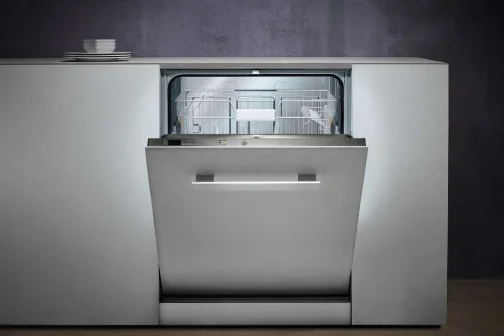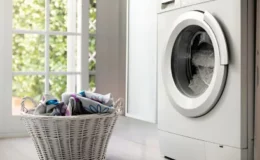
Complete Guide On Cleaning A Dishwasher
The dishwasher is such a useful appliance and by far the best way to clean those dirty dishes covered with difficult to remove food. The days of scraping, soaking, scrubbing, rinsing, and drying dishes is a thing of the past, thankfully! Over time your dishwasher will require some TLC to keep it free of scummy food residues, odors, and bacteria. Even a cleaner needs cleaning at some point.
So we need some useful cleaning tips and ideas to keep our dishwasher in tip-top condition and functioning efficiently. We’ve come up with some useful information regarding dishwasher cleaning which you may find helpful.
Following is the comprehensive guide on how to clean a dishwasher in a proper way:

Dishwasher Repair - London
Our Highly Experienced Service engineers can come to your property in the quickest possible time and get your Dishwasher repaired by one of our highly experienced engineers.
Here’s a simple, step-to-step guide you need to follow to carry out the cleaning procedure in the right way
Inspection
The first and most important thing to do is to inspect the components that do the hard work. First, remove the top and bottom racks and cutlery basket. Spin the sprayer arms by hand to make sure they spin easily and are free of obstruction. Clean the sprayer arm nozzles with a toothbrush dipped in white vinegar or a toothpick to remove any sticky residue or scale if in a hard water area. Check the drain filter and detergent dispenser is free of any food waste so the appliance drains efficiently. Once you are sure that all the food particles have been removed we can move on.
Put in some Vinegar
The next and most important task you’ve got to perform after cleaning the drainage system is to give your dishwasher a Vinegar wash. To do that, just simply place a Vinegar filed dishwasher-safe bowl on the rack of your empty dishwasher and give it a complete round of wash cycle on the hottest settings. It helps a lot!
Use some white Vinegar and Baking Soda
The next and most important task you’ve got to perform after cleaning the drainage system is to give your dishwasher a Vinegar Wash. To do this, just simply place a dishwasher safe bowl (size of a cereal bowl) filled with white vinegar in the top rack of your empty dishwasher and put it through a complete wash cycle on the hottest setting.
Once the machine has finished the vinegar cycle, you need something that can enhance the cleansing process whilst at the same time removing any bad odors. Sprinkle some baking soda around the bottom compartment of your dishwasher and then put it through another short but very hot cycle. It also helps to neutralize any odors remaining in your dishwasher. You’ll be pleasantly surprised with the results.
Lemon water works
Lemon is a good cleaning agent similar to white vinegar. It’s a ‘natural’ bleach and is antibacterial and antiseptic. The citrus smell refreshes a smelly dishwasher and removes any vinegar odors left over from the previous wash. All you need to do is just to place a cup or two of lemon juice on the top rack of your appliance and run a completely normal cycle. Alternatively, cut a lemon in half, secure it to the top rack, and put it through a hot cycle. It will leave the dishwasher with a shiny and lemon-scented interior. You’ll be pleased with the results.
Note: All the aforementioned processes should be performed every 2-3 months to keep this dishwashing savior functioning as per the manufacturer intended.
Bleach Wash, an additional option
Well, if your dishwasher’s interior is of stainless steel, you can skip this step straight away. If not, adding a final bleach wash won’t be a bad idea since it proves to be really effective in mold and mildew removal. All you need to do is just to put one cup of bleach at the bottom of the dishwasher and again, run a complete wash cycle for optimal results.
Note: All the aforementioned processes should be performed every 3-4 months for effective results.
Prevention is better
Here are some weekly tips you can apply to keep your dishwasher clean, running longer and avoid the build-up of dishwasher ‘gunk’:
- Keep an eye on the filter and remove any obvious signs of food debris to keep it spotlessly clean. A clogged filter prevents the dirt and smelly water draining away, then it’s rubber gloves on, bristle brush in hand to remove last nights or last week’s food remains – trust us, it’s not a pleasant task and best avoided!
- Check for ‘kinks’ in the flexible hoses that circulate and drain water from the appliance. If removing the appliance from its usual site make sure the hoses are not ‘pinched’ when repositioning, as this will affect water circulation and the draining process.
- Wipe away any residue spots you notice on the interior surface of the door including edges, handle, or the dishwasher control area. Keep the detergent compartment clean.
- For best results, the filter should be inspected/cleaned weekly with a soft toothbrush or a similar tool. For best results, run it on a hot water cycle after cleaning.
FAQs
How dirty should the dishes be to be put into the dishwasher?
To be honest, any surplus chunks of food should be scraped off first, no need to put the filter under undue stress, or have to clean it daily! there’s no degree of dirtiness required for dishes to be put into a dishwasher. Dishwasher detergents need a certain amount of dirt to prevent foaming up, plus some of the latest appliances have sensors that detect how dirty the crockery and utensils are, and set the cycle length and temperature accordingly.
Is it necessary to pre-rinse the dishes before putting them into a dishwasher?
As already discussed, no it’s not! Just make sure you remove surplus leftovers before placing the crockery in the dishwasher, that should be enough. The purpose of a dishwasher is to save effort by eliminating the tedious task of ‘washing up!’. That’s what machines are for!
Why are my dishes dirty, even after the dishwasher?
This is often due to insufficient water supply or low water pressure to your home or a ‘kinked’ hose? Usually, identified by clean crockery on the bottom rack and dirty crockery on the top rack? It could be the inlet valve or clogging of the inlet screen. Search for online sources that can provide you with some tips about detection and resolving the aforementioned issues.
Is it okay to leave dishes in the dishwasher?
If the washing cycle is complete and the crockery clean then there’s nothing to worry about. However, if you are not planning to run the dishwasher any time soon, leaving the dirty dishes inside won’t be a good idea since it can cause smells, make dishes difficult to clean.
Always follow the manufacturer’s recommendations regarding washing tabs, salt levels, and aids needed during the rinsing cycle.
Following the above will keep your appliance in tip-top conditions for the years ahead.






